Creation + Evolution = Completion
The question arises out of an objection to the idea that humans are related to earlier, less advanced forms. Creation and evolution are not different methods of production; “creation” refers to the first appearance of a species and “evolution” refers to the advancement of a species towards its ultimate form.
It is said that religion opposes evolution by maintaining that life was created by God. The Truth is a wondrous affirmation of God as the original Creator and the continuing Developer of His creations. The Truth confirms God’s original work and on-going marvel of His creative evolution. If you could accept that evolution and creation are not mutually exclusive, so much would become clear.
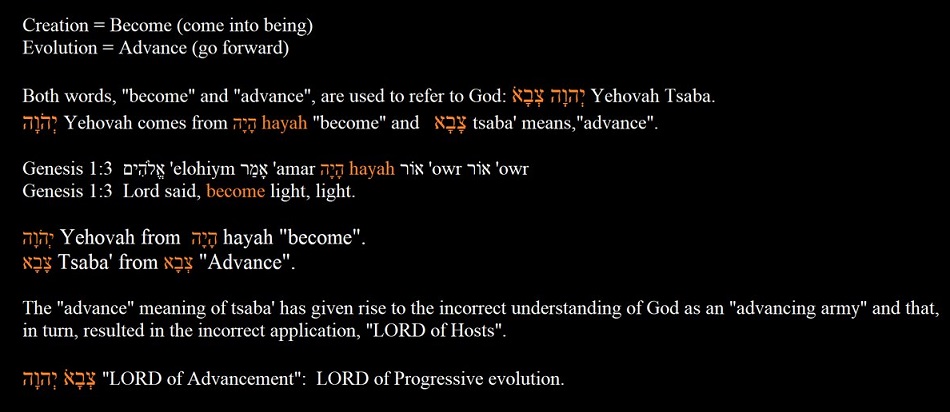
The modern reader is unable to accept the biblical account of creation because it seems to lack logic. Scriptures are often symbolic, for example, the six day creation related in Genesis is symbolic of the six eras during which Earth occupied the six outer orbits. The seventh day of rest refers to the period of equilibrium during Earth’s occupation of the present orbit. God will recommence “work” during excitation.
The description of creation is intended to convey the different stages of evolution from a formless planet to one which supports “every herb bearing seed, every tree, every beast of Earth, every fowl of the air, everything which creepeth upon Earth, and man”.
In the early days of man’s existence in this orbit, he is a uncomplicated creature without the ability to conceive of a world beyond his horizon, much less understand an account of creation which encompasses the entire solar system.
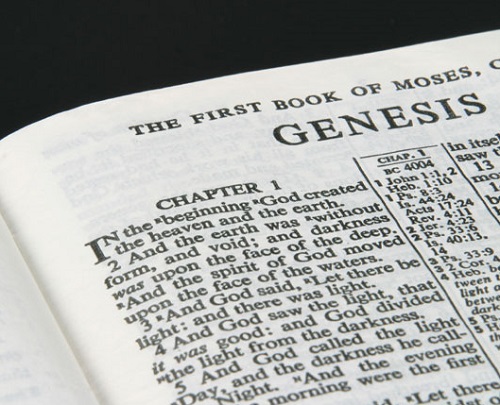
The Bible is written with him in mind. When man takes his first hesitant steps towards understanding his environment, he is unable to comprehend the sky, and the stars in the sky. He has no concept of atoms and nuclei. At that stage of man’s development he has a very limited vocabulary and he thinks, not in sophisticated words, but in pictures.
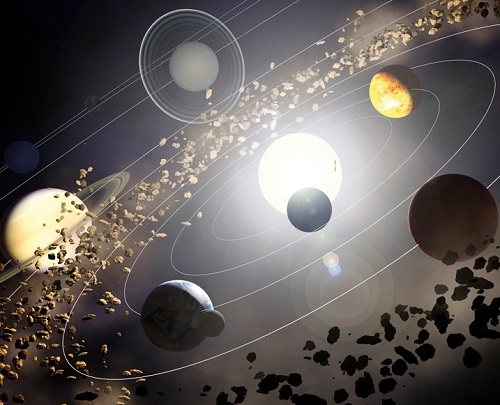
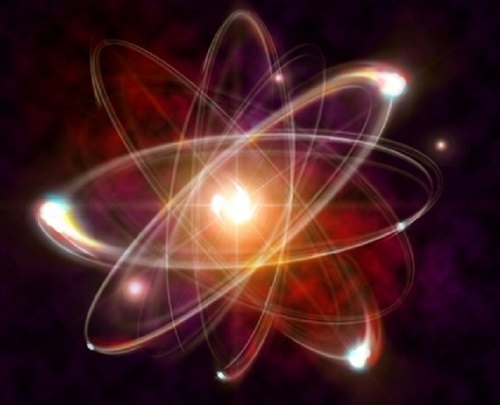
His curiosity is not disturbed over profound matters, his questions relate to his immediate needs and they require simple explanations. He certainly wondered about rain, and the beautiful, lyrical explanation found in the scriptures were sufficient to satisfy his innocent curiosity . “There went up a mist from Earth and watered the whole face of the ground” Genesis 2.6 After some time in the third orbit from the Sun man’s intellectual growth begins.
One man studies the movement of the stars and astronomy is born another man unearths the remains of a buried village and archaeology is born. A more complex picture of his environment emerges, quickening man’s desire to look more deeply into his world. The invention of sophisticated instruments permits man to observe planetary bodies in visible light and the stars beckon! Soon man sets foot on the Moon, and when he accomplishes this, his sojourn in the third orbit is coming to its End.
Mankind has long sought explanations about himself and his world. One of his concerns has been the search for the force, which governs, the Mongko, the laws of the Universe, another has been an explanation for the development of life on Earth. Existing concepts of evolution have formed largely around Charles Darwin’s “The Origin of Species.”
Punctuated Equilibrium
Darwin envisaged evolution as many small transitional changes in the genetic structure of organisms, and as one small change proved advantageous, it was carried along the corridors of time and added to by later changes which introduced further improvements, however, all efforts to trace the origin of man are dependent upon a fossil record that is unable to provide an unbroken pattern of development between man and his progenitors, and thus does not support Darwin’s theory of evolution.
The fossil record provides evidence that evolutionary changes take place in a series of sudden and repeated adaptations which render organisms suitable for dramatically changed environs. Rather than supporting an unbroken pattern of development, fossil evidence strengthens the case for punctuated equilibria. Punctuated equilibrium means that evolution takes place in a series of sudden and repeated changes.
Why do scientists assume that the Extinction Event that “wiped out” the dinosaurs may have been caused by an asteroid or volcanoes?
“Extinction” has been explained to you as being the state or process of death and disappearance.
Creation
You have been told that a species facing extinction is threatened with reduction to zero.
Evolution
An “Extinction Event” has been explained as being a crisis that causes a rapid and widespread reduction to zero of many species on Earth.
Progression
You have been told that “Global Warming” is a portent of an extinction event that could “wipe out” the entire human race.
Have you ever wondered why the Extinction Event that “wiped out” the dinosaurs bypassed most: Mammals? Birds? Turtles? Crocodiles? Salamanders? Frogs? Snails? Bivalves? Starfish? Sea urchins? Plants?
The destruction of colossal structures such as the Mayan cities of Yucatan and the burial of Leptis Magna illustrate the chaos wrought on Earth by an unseen agent of Nature. From the Menhirs of Carnac to the Nazca lines of Peru, enigmatic monuments bear evidence of the disappearance of prehistoric man and in sudden and unexpected cataclysmic changes. The force, which acted on Mother Earth, did not distinguish between temples, palaces and simple domiciles; it swallowed all structures in its path.
What agency produced such powerful paroxysms?
The ejection of a Core from a planet causes the inward collapse of a planet and the subsidence of all structures on the planet’s crust. The ejected core settles very near to the body of the Mother Planet and is known to man as a Lunar body, Moon, or natural satellite.
When a core is ejected the host planet caves in breaking and burying most surface structure, hence the need for a spade when you go in search of prehistoric artifacts (which are in fact our legacy from Earth, when Earth was Mars).
According to punctuated equilibria our Solar System is the scene of frequent changes wherein long periods of equilibrium are interrupted by brief periods of excitation. This throws a very different light on evolution and scientists are now considering the possibility that planets undergo transitions from one orbit to another. This implies that the Earth has served terms in each of the orbits, which are presently occupied by Pluto, Neptune, Uranus, Saturn, Jupiter and Mars.
On July 21, 1986 more than 260 scientists from 27 nations gathered in Los Angeles to discuss the origin of life on Earth. Cyril Ponnamperuma, director of the chemical evolution laboratory of the University of Maryland expressed the opinion of everyone present when he said, “The processes which led to life on Earth must have started elsewhere in the Universe.”
It is common knowledge that the conditions prevailing in the Earth’s present position (approximately 149 ½ million km from the Sun) are unsuitable for the formation of life. Any search for the origins of man has to look for a place with much colder conditions, and with an atmosphere of hydrogen and hydrogen compounds. Scientifically it is accepted that all of Earth’s history did not unfold in this proximity from the Sun.
The most plausible explanation is that terrestrial life is a phenomenon, which originated in an outlying orbit of the Solar System, where microorganisms were gathered by the convolutions of the Earth, and packed into hard-ice conditions perfect for the preservation of organic material. Thus it would seem that the Earth has transported organic material from a cold, outlying orbit, across the Solar System.
The raised energy level during the excited states of the Solar System brought about the changes in evolution as supported by the fossil record. Therefore, organisms do have their origin in other pre-existing types; however, differences are not due to gradual modification over successive generations. Such gradual modification is patently absent in existing species, further strengthening the case for punctuated equilibria.
An increased level of energy during excitation would result in significant changes in organs and parts, which would cause the exact degree of adaptive alteration necessary to fit organisms to the different environs of an orbit closer to the Sun. During the July meeting in Los Angeles, scientists concurred that the repeated operation of these factors would produce changes in species, which are consistent with the fossil record. Science has undergone a radical departure from the concept of evolution through gradual change, our best minds no longer think of planets in terms of bodies, which have spent millions of years in the same orbit.
The equilibrium of the Solar System is said to be interrupted at regular intervals by brief explosions of energy, this explains not only the abrupt appearance of new species, but also the stability of morphology in species and the distribution of transitional fossils. Changes are not uniform throughout organisms since those organisms packed in a blanket of ice lower down in primordial Earth would be ahead in development due to their greater exposure to the electromagnetic influence of the core of the planet.
Different levels of development would be carried along the line to the terrestrial orbits, seeing species at various stages of development co-existing, as they do. A further consideration is that of racial differences, such differences being due to geophysical conditions with species being adapted both orbital and geographically.
Scientist’s referred to orbits as k, l, m, n, o etc., with orbit k being closest to the Sun. Ceres was included with the accompanying asteroids as revolving in the O orbit. Organic material gathered from space and rolled into the icy mass of primordial Earth was carried into the T orbit during the first period of excitation.
During excitation the organisms underwent changes which resulted in the exact degree of adaptive alteration necessary to suit the organisms to conditions prevailing in orbit T. Upon return to equilibrium the core of the Earth provided the electromagnetic stimulation necessary to sustain replication.
This process was repeated with the energy unleashed during each subsequent period of excitation producing further bio-evolutionary improvements. A built in repair system, operated on by enzymes, ensured that organisms were able to survive the changes. This self-healing ability is an essential requirement during the period immediately following excitation, and as such, an essential part of evolution.
The third shift placed Earth in the Q orbit where formation into single cell organisms commenced, culminating in an evo-organic explosion in the Jovian, P orbit. Lemuroidea, Lorisoidea and Tarsioidea are not classified as Prosimii because of the implication that they arrived ahead of Anthropoidea. Anthropoidea excludes Hominidae who are placed in orbit N.
All of Earth’s history did not unfold in this third orbit from the Sun and the gap between “creation” and “evolution” has been closed. If we consider a “day” in Genesis to be equal to one period of equilibrium, we are able to explain the seven days of creation as being seven periods of equilibrium. The ideal conditions for God’s earliest work exist in the furthermost orbit in the Solar System. Pluto would therefore be the lump of snow-covered clay from which God first fashioned mankind.
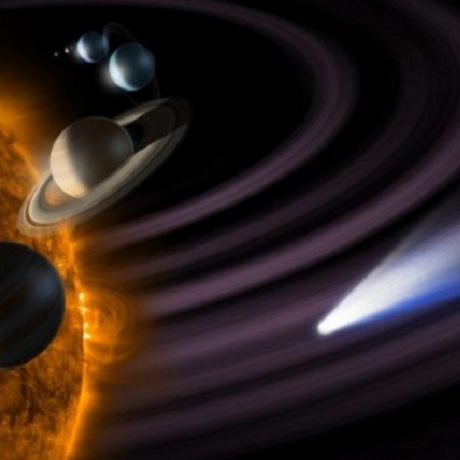
Job 38:29-30
Out of whose womb came the ice? and the ancient frost of heaven, who hath gendered it? The waters are hid (hard) as a stone, for the face of the deep is frozen.
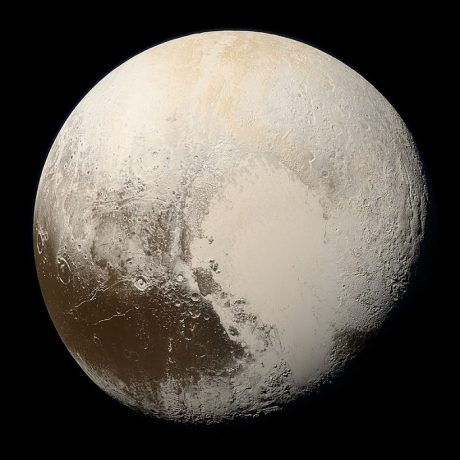
Know Your Bible
Planetary migration is accepted by science and the Bible confirms that planets move and skies change.
The Earth’s sixth migration carried her even closer to the Sun and she settled into the orbit she now occupies.
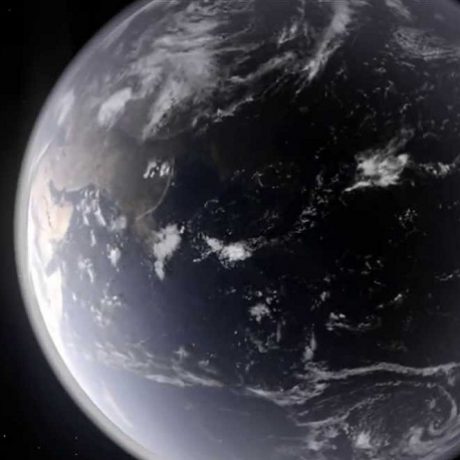
Grow Old Along With Me!
“The best is yet to be, the last of life, for which the first was made. Our times are in his hand who saith, ‘A whole I planned, youth shows but half; Trust God: See all, nor be afraid!”
We were molded from snowy clay in the Plutonian orbit, but until Earth formed Her clouds (melted the hard-ice) and “watered the whole face of the ground” there was not yet a man to “serve the ground” and no “herb of the field yet sprouted to be our meat”. Only after the rain, and after the air: and “God breatheth (air) into his nostrils breath of life”, only then did “man becometh a living creature”.
Life, therefore, can’t be separated from soil, water and air. We must give thanks to our Earth for Her soil, water and air, for She formed us, gave us life, and sustains our lives, with Her soil, water, air and fire. We must give thanks for the herbs of the field, which “sprout to be our meat.” We must “serve the ground from which we were taken”. We should not take what the Earth silently and faithfully serves up to us and give no thought to returning Her service.
- Genesis 3:23 Jehovah God sendeth him forth from the garden of Eden to serve the ground from which he hath been taken.
- Job 10:9 Remember, I pray Thee, That as clay Thou hast made me, And unto dust Thou dost bring me back.
- Job 33:6 Lo, I am, according to thy word, for God, From the clay I also, have been formed.
- Job 38:29-30 Out of whose womb came the ice? And the ancient frost of heaven, who hath gendered it? The waters are hid (hard) as a stone, for the face of the deep is frozen.
- Genesis 2:1 And Jehovah God formeth from the ground every beast of the field, and every fowl of the heavens.
- Genesis 2:5 For Jehovah God hath not rained upon the Earth, and there is not yet a man to serve the ground.
- Genesis 2:7 And Jehovah God formeth the man — dust from the ground, and breatheth into his nostrils breath of life, and the man becometh a living creature.
As long as mankind continues to place creation and evolution at odds, they will remain blinded to the Truth.
The Truth about evolution is a wondrous affirmation of GOD, and a marvel of creation.
Creation occurs at the beginning.
Evolution continues the process of development.
Completion marks the culminations.
Creation + Evolution = Completion

- "He that has ears to hear, let him hear."
The Good News
- Psalms 25:5 Lead me in thy truth, and teach me: for thou art the God of my salvation; on thee do I wait all the day.